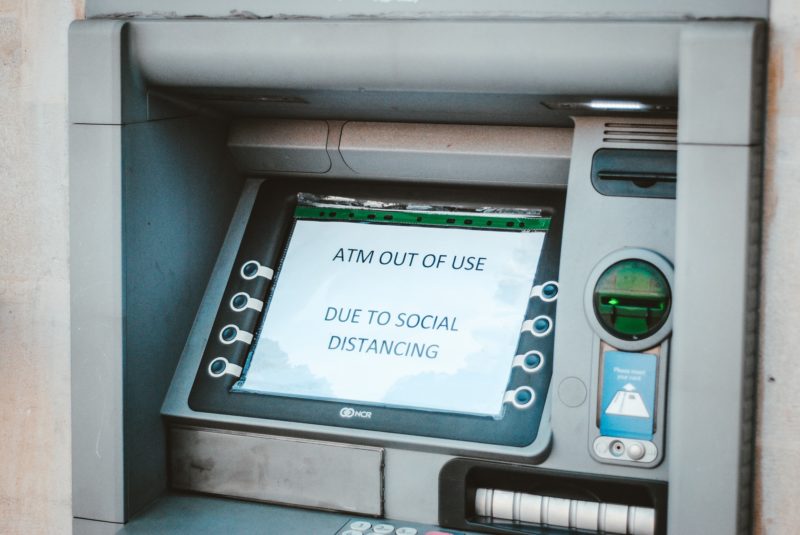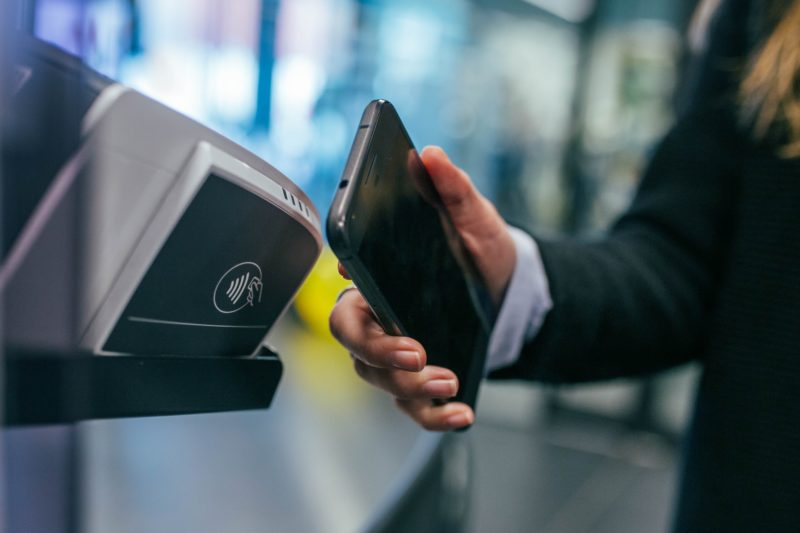All of us are undoubtedly aware that the coronavirus (COVID-19) has thrown a wrench into our everyday lives—whether in the way we perform our work, spend weeknights with our friends and loved ones, or complete simple tasks like grocery shopping.
Unfortunately, that wrench has spread (no pun intended) to how we view our money. We are now extremely careful of what we touch and the sanitation of our hands—so what does that mean for the coins and bills that are frequently being exchanged between you and local store owners? Well, in today’s time, it could potentially mean life or death.
To fight the pandemic, countries are now turning to contactless payments—something that was once very niche has now turned to something potentially life-saving.
What is a contactless payment? Simply put, it’s a transaction that can be done without the swipe of a credit or debit card or the exchange of bills and coins.
What’s happening to our money?

Paper money and coins, which were once the bread and butter of people worldwide, have become carriers of one of the most infectious diseases the human species has ever seen. The World Health Organization (WHO) has reported that currencies can harbor COVID-19 and potentially spread it to all that aren’t careful.
But even before COVID-19 ruined all our lives, judging by how many people exchange bills and coins, washing your hands after handling money is common-sense. Unfortunately, it took a pandemic for people to realize that and we’re now suffering the consequences.
Now, central banks are taking extra precautions to ensure that their money is free of the virus. For example, banknotes are being quarantined for one to two weeks in China and South Korea. South Korea even routinely keeps its money in a heated area to disinfect it. Dollars coming in from Asia are also being quarantined for up to two weeks to prevent the spread of the virus.
Unfortunately, these risks aren’t exclusive to bills and coins. In fact, some studies show that plastic credit and debit cards can be even more infectious. Just imagine it: you’re paying for groceries with a credit card. You set the card on the counter, the cashier picks it up, swipes it, gives it back, and hands a receipt for you to sign.
Do you know how much contact there was in that? Even if you know that your hands are properly sanitized, how can you know where the cashier’s hands have been? Also, how do you know that the counter itself is properly sanitized?
The wave of contactless payments
As more people worry about catching this virus, cash continues on its path to the exit door. Traditional credit and debit card transactions aren’t so far behind as well. Even as retail stores (assuming they’re open) clean more than ever, bills, coins, and cards stand out as major risks to contract the virus.
Contactless payment can be made in many ways. Radiofrequency identification (RFID) technology and near-field communication (NFC) allow you to pay with your credit and debit card with a simple tap on a machine—no need to enter a personal identification number (PIN) and sign for a transaction.
Merchants, especially during the pandemic, have turned to these modes of payment and use point-of-sale (POS) terminals. To know if a store uses this payment mode, just look for their logo, which looks like the WiFi logo turned on its side.

Despite RFID and NFC being completely viable modes of payment, another player is inching its way to the spotlight: cryptocurrencies. Luckily, its adoption rate is rising.
Cryptocurrency as a means for contactless payment
Another way to make contactless payments is through Bitcoin and other cryptocurrencies. If we were talking about payments using crypto years ago, it would have been a different story. Back then, crypto was a great way to send and receive money anonymously at lightning speed—but it really wasn’t the best way to buy a muffin at your local cafe. Many merchants were also afraid of crypto’s extreme price volatility, so even early adopters began to drop it.
However, we now live in a time where crypto adoption is on the rise. More merchants are starting to accept Bitcoin as payment for their goods and services. As more stores around you begin to accept it as well, cryptocurrencies put the power of payment literally at your fingertips (or your unique facial features if you’re using Face ID).
Cryptocurrencies also provide an avenue for the unbanked and underbanked to participate in online transactions. Imagine being immediately disqualified from buying something online just because you don’t have a bank account or your account is extremely limited—sucks, doesn’t it? Cryptos provide these people with a financial passport, allowing them to participate and transact in markets they’ve never seen before.
Advantages and disadvantages of going contactless
Going contactless has its own set of advantages and disadvantages—even taking the pandemic aspect aside.
Advantages
Let’s start by saying that transactions can be completely effortless if you have the proper tools (smartphone, credit card, or debit card). Pay for your goods and services with the tap of a card or a scan of a QR code—who wouldn’t want that? This may seem like such a small detail, but have any of you ever felt the piercing glares of shoppers behind you while you rustle through your wallet to find cash? Or the feeling of rushing to put the change back into your wallet so that the next customer can have their turn? It’s terrifying. Luckily, contactless payments can get rid of that anxiety.
Aside from preventing socially awkward situations, contactless payments can be more secure. When you hand your credit card over to someone, you give them an opportunity to steal the info on the card or clone the magnetic strips, which ultimately leads to fraud or identity theft. That risk is cut down with contactless payments.
Disadvantages
Despite contactless payments being an extremely efficient way to pay, they require a lot of tools. To participate in contactless transactions, you have to be able to afford a smartphone and pair it with a bank account or online digital wallet. This means that although contactless payments might be an excellent alternative for the time-strapped, they’re not too efficient for the cash-strapped consumer.
Additionally, contactless payments aren’t ideal if you’re a privacy advocate. Cash is one of the best ways to keep your transactions private, and with that out of the picture, you’ve got a little less privacy since contactless payments are traceable.
Next, we also have to talk about the merchant fees for going contactless. Since it’s still a relatively new concept, there may be extra fees for this unique kind of transaction. Until contactless payments make it to the so-called “new normal,” these fees will be a part of the system.
It can be easy to get overly excited about the idea of contactless payments but we still have to think about the challenges of implementing them.
What’s in store for contactless payments?
In light of the pandemic, it isn’t surprising to see the increasing number of contactless payment systems being implemented worldwide. Because we don’t know for sure how long it’s going to take before this pandemic subsides, it’ll also come as no surprise that the rise of contactless payments continues.
Hopefully, this kind of payment will help repair the damages this pandemic has caused to the world and help us get back on track. Right now, the best thing we can do is to take safety precautions seriously and hope for a better future.
We sincerely hope that everyone out there is staying safe and sanitized.